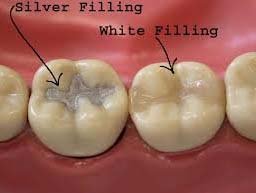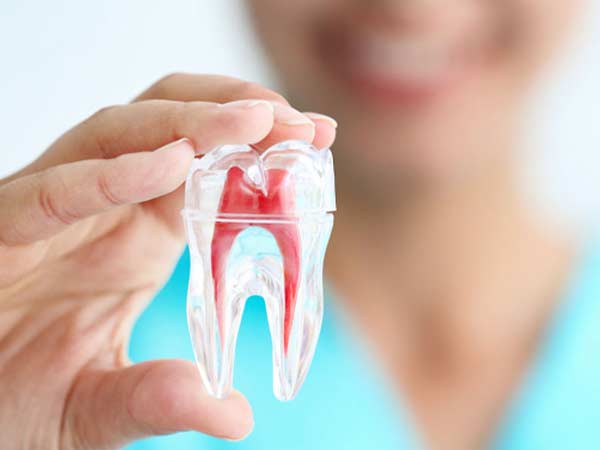
RCT & Rotary Endodontics with Apex Locator – Painless Single Sitting Root Canal Root canal therapy is required when tooth has decay or infection involving nerve of the tooth. In order to save the tooth, the nerve (the living tissue inside the tooth), bacteria, infection is removed & filled with a special filling material (Gutta – Percha). This helps to restore the tooth to its full function.
Usually person desires to remove a tooth whenever in pain, thinking it to be the only solution. It is not realized that removal of tooth would be ultimately more expensive and result in significant problems for adjacent teeth later on.
- Anesthetize the tooth using local anesthesia.
- An access is made through the decayed part of tooth to expose the canals.
- Standard tiny files are used to remove the content of canals. (nerve tissue, decay, bacteria)
- These tiny files are used in increasing size to gently shape the canals so as to receive the filling material.
- Once the tooth is thoroughly cleaned with medicines, it will be sealed with permanent filling material or temporary filling if additional appointment is required.
- A Filling is placed on top of tooth to cover the opening (access cavity) of tooth.
- Then a Crown is placed on top of tooth to prevent it from breaking & restore it to its full function.
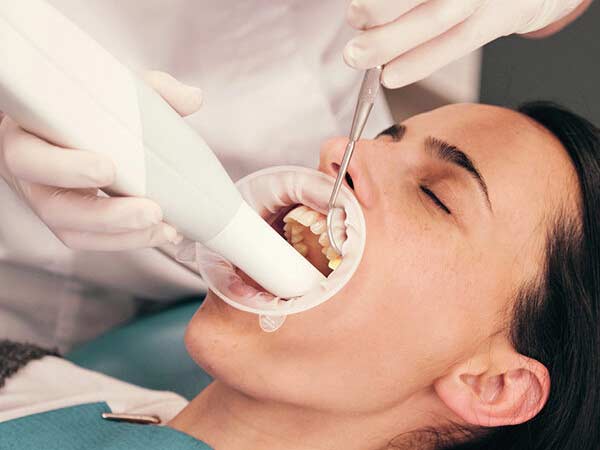
Teeth Cleaning/Ultrasonic Scaling
To fight periodontal disease, we need to reduce plaque, tartar and the number of bacteria in the pockets in your mouth. The device we use to do so is an ultrasonic scaler. It consists of a wand with a small scaling tip that produces a soft ultrasonic vibration. The small, quick vibrations in combination with a water flow give us a whole new level of effectiveness in calculus removal.
The benefits of ultrasonic scaling include:
- Increased efficiency of calculus removal
- Less need for hand scaling of stubborn deposits
- More comfortable access to the root surfaces, thanks to the small tip

Teeth whitening is carried out through a procedure called Bleaching. In this procedure a peroxide-type chemical is applied on to the teeth to be whitened which goes through the enamel into the dentin, and lightens the colour of your teeth.
Complete Dentures / Flexible Dentures A denture is a removable replacement for missing teeth and surrounding tissues. Two types of dentures are available — complete and partial dentures. Complete dentures are used when all the teeth are missing, while partial dentures are used when some natural teeth remain.
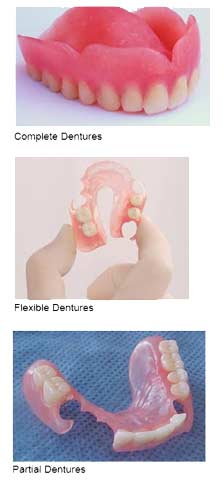

Removal of Impacted Teeth: When teeth grow in sideways, emerge only part way from the gum or remain trapped below the gum line, it can cause a lot of pain and dental problems. Dental surgery may be recommended to remove one or more impacted teeth. Wisdom teeth are the most common teeth to become impacted, but other teeth can become impacted, too.
some people have teeth that look too “short” due to the relationship between their teeth and gums. This creates a “gummy” smile. A procedure called “gum contouring” is often used to remove excess gum tissue and expose more of the crown of the tooth. In fact, your gum line can be carefully sculpted to create just the right proportion between gum tissue and tooth surface — and the result is a better looking smile.
If the gum is uneven around a tooth, gum contouring can smooth and balance the way your tooth and gum look. The procedure produces a consistent, even gum line that is esthetically pleasing

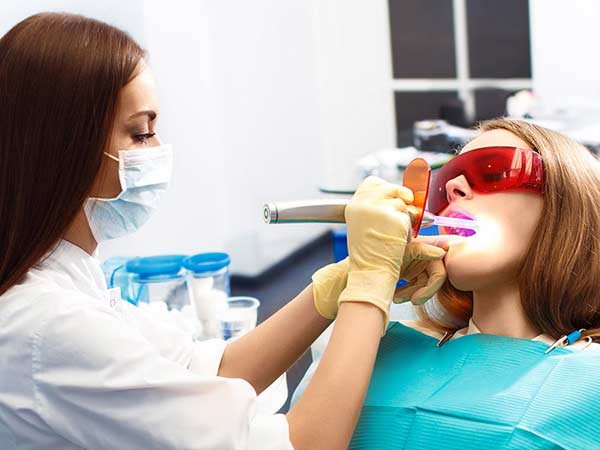
Muscles of the cheeks and lips are attached to the gums and tissue of the mouth by a piece of soft tissue called a frenum. Sometimes a frenum can be attached too high on the gums causing either recession or spaces between teeth.
In addition, there is another frenum under the tongue. If this frenum is attached too close to the end of the tongue it can adversely affect swallowing and speech. Sometimes this is referred to as being “tongue-tied”.
A Laser Frenectomy is a simple procedure where either part or all of the frenum in question is removed in order to return a healthy balance to the mouth. The laser allows the frenectomy to be completed with little or no discomfort.
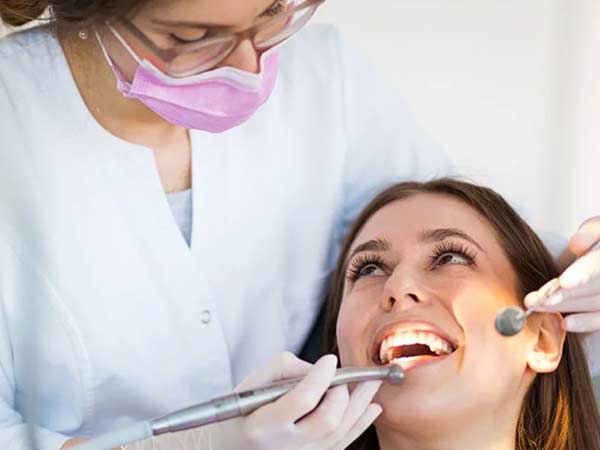
The aim of this procedure is to raise the sinus floor in order to develop bone for the placement of dental implants. Several techniques can be used to raise the sinus and allow for new bone to form. Depending on your individual needs, we normally wait four to 6-8 months before putting the implants into place. After the implants are placed, an additional healing period is required. In some cases, the implant can be placed at the same time the sinus is augmented. This treatment could be suitable if you have lost one or several teeth and an important amount of bone.
Sinus Lift Procedure
With age and tooth loss, the upper jawbone shrinks and the sinus enlarges. This often makes a patient a poor implant candidate. The maxillary sinuses are behind your cheeks and on top of the upper teeth. These are air-filled spaces that everyone has. Often the roots of the natural upper teeth extend up into the maxillary sinuses. When these upper teeth are removed, there is often just a thin wall of bone separating the maxillary sinus and the mouth. Dental implants need bone to hold them in place. Often the remaining bone is not enough to stabilize a dental implant.
There is a solution and it’s called a sinus graft or sinus lift graft. Dr. Bansal carefully enters the sinus from where the upper teeth used to be. The sinus membrane is then gently lifted upward and donor bone is inserted into the floor of the sinus. Keep in mind that the floor of the sinus is the roof of the upper jaw. After several months of healing, the bone becomes part of the patient’s jaw and dental implants can be inserted and stabilized in this new sinus bone.
The sinus graft makes it possible for many patients to have dental implants when years ago there was no other option other than wearing loose dentures.
If enough bone between the upper jaw ridge and the bottom of the sinus is available to stabilize the implant well, sinus augmentations and implant placement can sometimes be performed as a single procedure. If not enough bone is available, the sinus augmentation will have to be performed first, then the graft will have to mature for several months, depending upon the type of graft material used. Once the graft has matured, the implants can be placed.
Fractures of the bones of the face are treated in a manner similar to the fractures in other parts of the body. The specific form of treatment is determined by various factors, which include the location of the fracture, the severity of the fracture, the age, and general health of the patient. When an arm or a leg is fractured, a cast is often applied to stabilize the bone to allow for proper healing. Since a cast cannot be placed on the face, other means have been developed to stabilize facial fractures.
One of these options involves wiring the jaws together for certain fractures of the upper and/or lower jaw. Certain other types of fractures of the jaw are best treated and stabilized by the surgical placement of small plates and screws at the involved site. This technique of treatment can often allow for healing and obviates the necessity of having the jaws wired together. This technique is called “rigid fixation” of a fracture. The relatively recent development and use of rigid fixation has profoundly improved the recovery period for many patients, allowing them to return to normal function more quickly.
The treatment of facial fractures should be accomplished in a thorough and predictable manner. More importantly, the patient’s facial appearance should be minimally affected. An attempt at accessing the facial bones through the fewest incisions necessary is always made. At the same time, the incisions that become necessary, are designed to be small and, whenever possible, are placed so that the resultant scar is hidden.
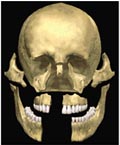
Fluoride Varnish
Fluoride varnish provides the most effective way of topical fluoride application on a child’s teeth. Fluoride varnishes prevent and even reverse early childhood caries. They have proven efficacy in reducing cavities in both primary and permanent teeth.
A fluoride varnish is a professionally applied adherent material which consists of high concentration of fluoride in fast drying, alcohol based solutions of natural varnishes.

Pit & Fissure Sealants
The top surfaces of your teeth – where the chewing takes place – aren’t smooth and flat. They are cris-crossed with tiny hills and valleys – called pits and fissures. These are places where plaque can build up safe from your toothbrush and dental floss. Some of the pits and fissures are so narrow that even a single bristle from your toothbrush can’t get deep enough to clean them out.
One method of preventing cavities from developing in the pits and fissures is to seal them off with a special varnish called a pit and fissure sealant.
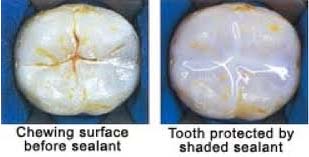
Tooth Coloured Fillings
Tooth Coloured Fillings is a dental restorative material used to restore the function, integrity and morphology of missing tooth structure.
